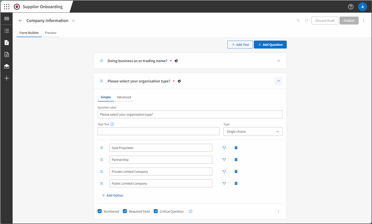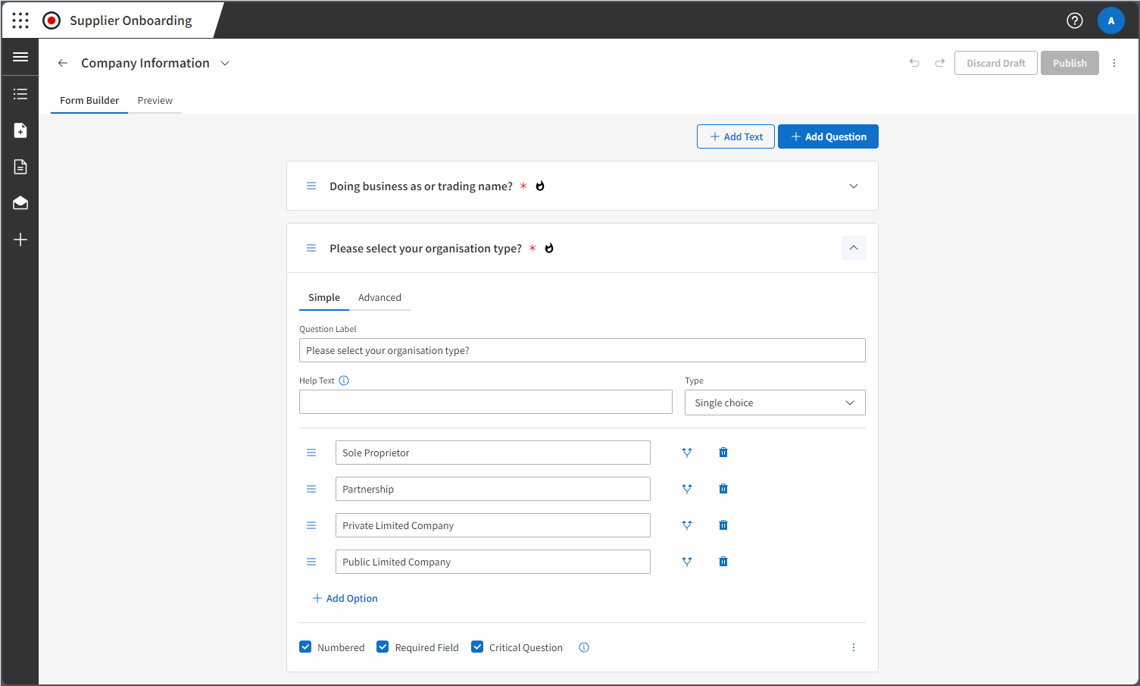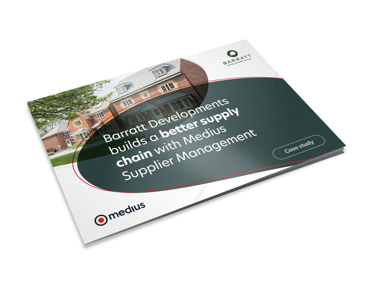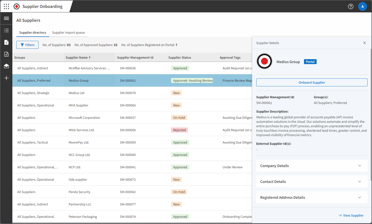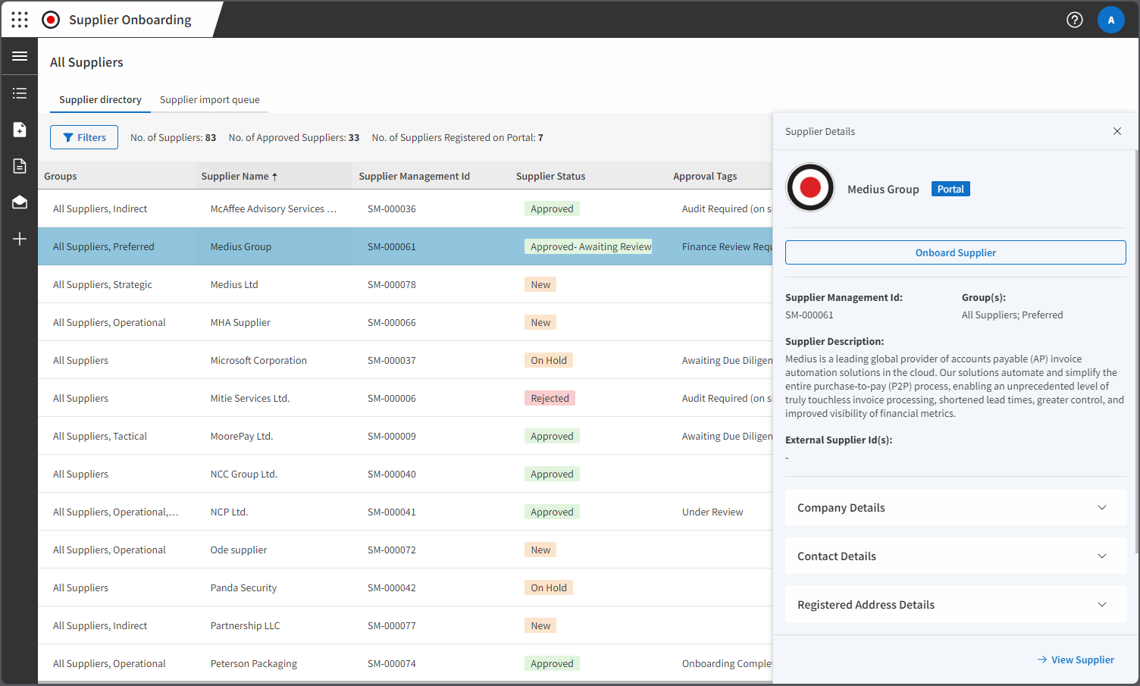Modernize supplier management with AI for efficiency and compliance
Is your supplier info all over the place—stuck in emails, spreadsheets, or even filing cabinets? Are outdated or inaccurate details slowing down your accounts payable team? You’re not alone. Managing supplier data is a common pain point for AP teams, often creating frustrations, compliance risks, and mistakes.
Fortunately, there’s a solution. With the rise in AI-powered tools for supplier lifecycle management, supplier onboarding, and maintenance can be easier than you think, helping you keep all your data in one place and cut down on manual work. Here’s a look at what supplier management software today can do and how to improve your supplier management overall.
What is supplier management software?
Supplier Management software should integrate with your payables and procurement processes for a complete solution for managing supplier information, lifecycle, performance, and risk in one place. It includes tools that make handling supplier information and relationships smoother, easier to access, and less error-prone. The key is finding supplier management software with AI technology and automation capabilities for the greatest impact.
How supplier management software works:
Modern supplier management automates data entry and validation, allowing suppliers to:
-
Onboard themselves
Submit data and documentation via a self-service portal. -
Update their details
Ensure real-time access to accurate, up-to-date information. -
Meet regulatory requirements
Ensure compliance with industry regulations through automated processes.
Using the right supplier management tools as part of an AI-powered automation suite will reduce manual work and help your AP team be more efficient.
Key benefits of modern supplier management
Quick setup & integration
AI tools integrate seamlessly with your existing systems (ERPs, etc.), allowing you to implement and start seeing results in just weeks. You’ll enjoy faster onboarding, streamlined workflows, and reduced manual tasks from day one.
Risk reduction & AI validation
In a combined value-add from AI-enabled fraud and risk detection, AI can cross-check supplier data against the trusted source of your supplier directory, catching discrepancies and ensuring compliance. Continuous monitoring and automated alerts inform you of potential issues, helping reduce risks before they become major problems.
Proactive risk mitigation
AI not only validates data but also detects unusual supplier behavior and fraud risks early. This proactive approach keeps your supplier network secure and ensures you stay ahead of compliance requirements.
Barratt constructs more efficient contract management and sourcing with Medius.
Transform supplier management in 4 steps
The foundation of effective supplier management begins with a self-service portal. Empowering your suppliers to manage their own information simplifies onboarding, ensures data accuracy, and reduces the need for constant back-and-forth communication.
How it works:
-
Instant data entry
Suppliers can upload necessary documents and data easily via an intuitive online platform. -
Seamless updates
Suppliers can update their details in real-time, ensuring your records are always accurate and current. -
Efficiency gains
Automation minimizes the time spent on manual data checks, allowing your AP team to focus on more strategic tasks.
With a self-service portal, the onboarding process is quicker, more accurate, and more efficient—helping set the stage for stronger supplier relationships.
Once suppliers are onboarded, it’s crucial to validate their data to ensure accuracy and legitimacy. This step builds trust and ensures you work with credible vendors who meet all necessary standards.
How it works:
-
Identity verification
Cross-check supplier information against trusted third-party databases for validation. -
Ongoing monitoring
Regular data validation ensures all supplier records remain current and compliant with industry regulations.
This step helps reduce the risk of fraud, compliance issues, and data discrepancies, providing a solid foundation for your vendor network.
Next, implement automated regulatory compliance checks and internal policy enforcement to ensure that every part of your supplier management process meets industry standards and legal requirements.
How it works:
-
Compliance tracking
Automated tools help monitor regulatory requirements and ensure suppliers meet necessary certifications and guidelines. -
Automated audits
Built-in checks and balances flag issues before they escalate, ensuring continuous compliance with minimal manual oversight.
This proactive approach minimizes risk, ensuring that your business remains compliant while fostering stronger, more reliable supplier relationships.
Finally, AI-driven anomaly detection should be integrated to monitor supplier transactions and behaviors proactively. This technology helps you spot fraud or unusual activity early on, allowing you to address issues before they escalate.
How it works:
-
Behavioral analysis
AI analyzes supplier transactions for inconsistencies, such as irregular payment patterns, invoicing errors, or unusual ordering trends. -
Real-time alerts
Automated alerts notify you when anomalies are detected, allowing for quick intervention.
This step ensures you stay ahead of potential issues, providing a layer of security to your supplier relationships and operations.
Integrated spend management: the bigger picture
Supplier management is a key component of your broader spend management strategy. When integrated with procurement automation, AI tools simplify processes and improve alignment with financial goals. You’ll experience benefits like:
-
No more manual work:
Automate tasks like invoicing and payment approvals. -
Better supplier visibility:
Real-time data lets you track supplier performance more effectively. -
Stronger compliance:
Ensure regulatory requirements are met consistently.
Evaluating your processes and solutions and determining whether they leverage the latest AI technology will help you simplify supplier management from multiple perspectives.
Medius can help
Medius Supplier Onboarding makes it quick and easy to add new suppliers while keeping their data accurate.
